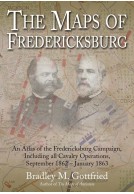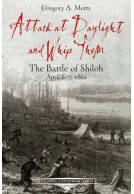Google Books previews are unavailable because you have chosen to turn off third party cookies for enhanced content. Visit our cookies page to review your cookie settings.
Their Maryland (Hardback)
The Army of Northern Virginia From the Potomac Crossing to Sharpsburg in September 1862
Imprint: Savas Beatie
Pages: 312
Illustrations: 10 images, 20 maps
ISBN: 9781611215571
Published: 15th January 2022
Pages: 312
Illustrations: 10 images, 20 maps
ISBN: 9781611215571
Published: 15th January 2022
You'll be £25.99 closer to your next £10.00 credit when you purchase Their Maryland. What's this?
+£4.99 UK Delivery or free UK delivery if order is over £40
(click here for international delivery rates)
Order within the next 10 hours, 3 minutes to get your order processed the next working day!
Need a currency converter? Check XE.com for live rates
(click here for international delivery rates)
Order within the next 10 hours, 3 minutes to get your order processed the next working day!
Need a currency converter? Check XE.com for live rates
Students of the Civil War tend to think the story of Robert E. Lee’s 1862 Maryland Campaign is complete, and that any new study of the subject must by necessity rely on interpretations long-since accepted and understood. But what if this is not the case? What if the histories previously written about the first major Confederate operation north of the Potomac River missed key sources, proceeded from mistaken readings of the evidence, or were influenced by Lost Cause ideology? Alexander B. Rossino, the author of Six Days in September, demonstrates that distortions like these continue to shape modern understanding of the campaign in Their Maryland: The Army of Northern Virginia From the Potomac Crossing to Sharpsburg in September 1862.Rossino reassesses the history of the Confederate operation in seven comprehensive chapters, each of which tackles a specific major issue:- Did Robert E. Lee Intend to Foment Rebellion in Maryland in September 1862?- The Army of Northern Virginia Crosses the Potomac to Liberate Maryland- Confederate Encampments Near Frederick City and the Implications for the Lost Orders Debate- Maryland Civilians and Confederate Failure in the State- Rebels Photographed in Frederick, Maryland: The Case for September 1862- A Critical Re-Assessment of Robert E. Lee’s Defensive Strategy at Sharpsburg- Robert E. Lee on the Field at SharpsburgDid supply problems in Virginia force Lee north to press the advantage he had won after the Battle of Second Manassas? What did Rebel troops believe about the strength of secessionist sentiment in Maryland, and why? Did the entire Army of Northern Virginia really camp at Best’s Farm near Frederick, Maryland? Did D. H. Hill lose Special Orders No. 191, or is there more to the story? How did Maryland civilians respond to the Rebel army in their midst, and what part did women play? Finally, why did Robert E. Lee choose to fight at Sharpsburg, and how personally was he involved in directing the fighting?Rossino makes extensive use of primary sources to explore these and other important questions, and in doing so reveals that many long-held assumptions about the Confederate experience in Maryland do not hold up under close scrutiny. The result is a well-documented reassessment that sheds new light on old subjects.
Other titles in Savas Beatie...















